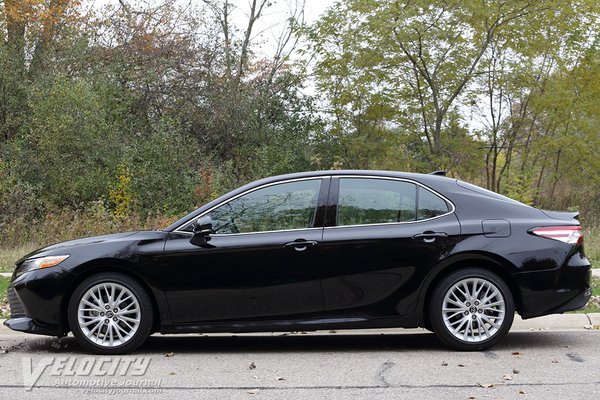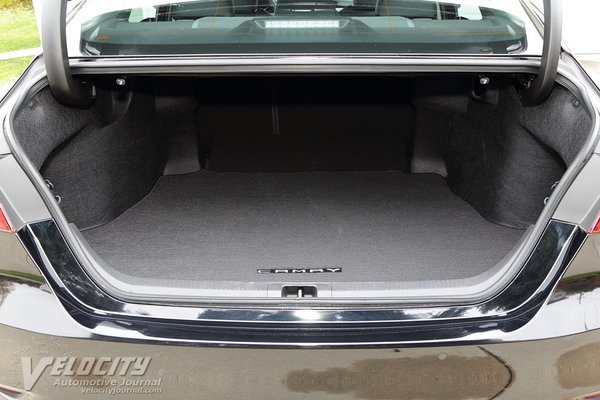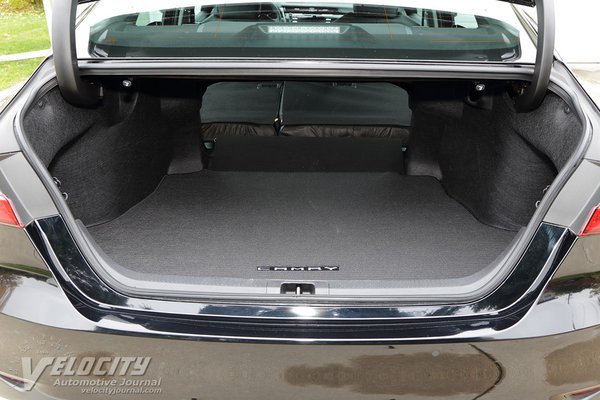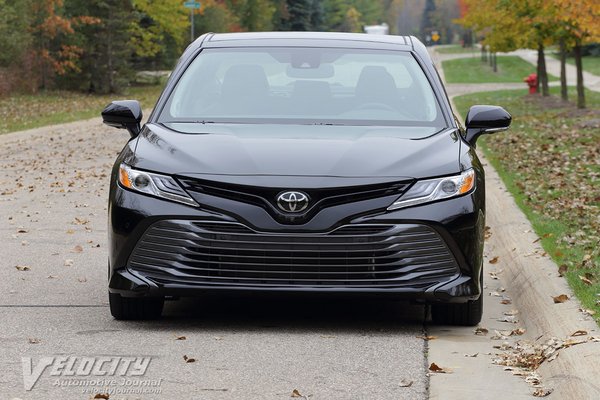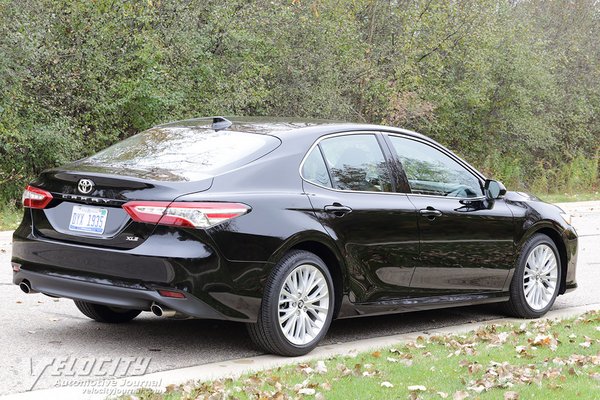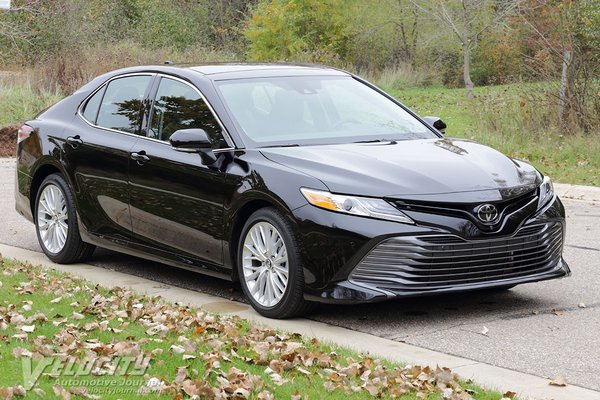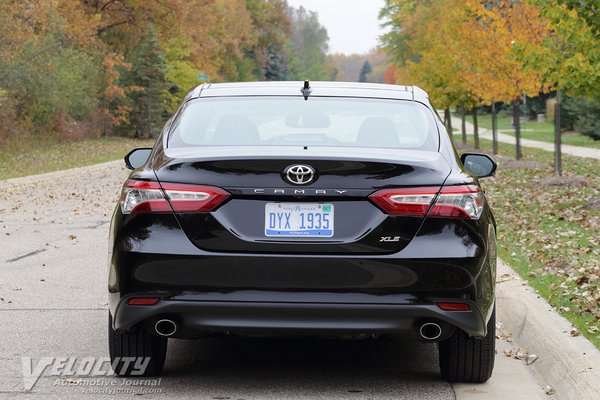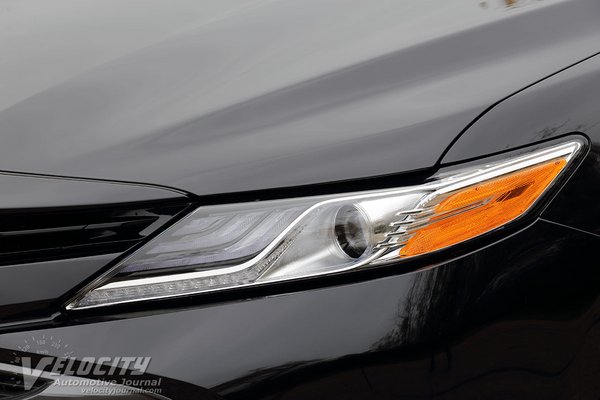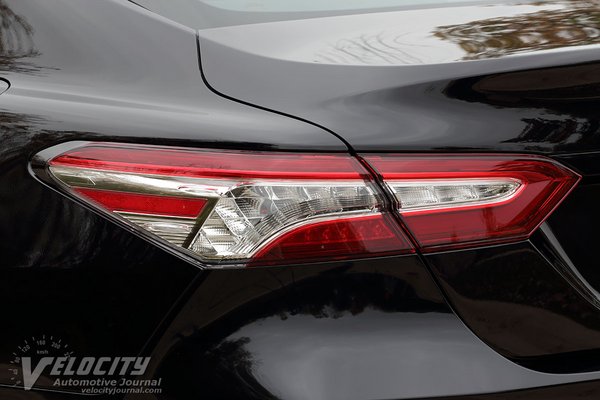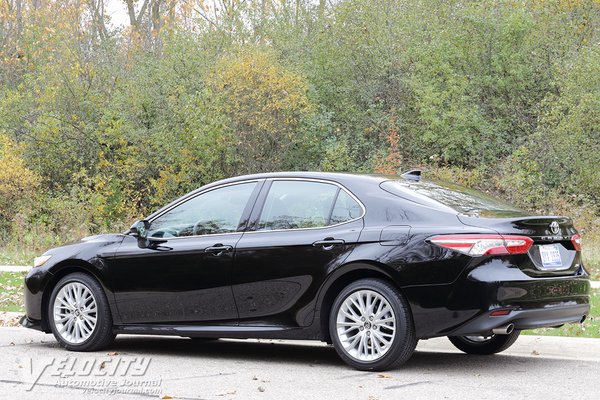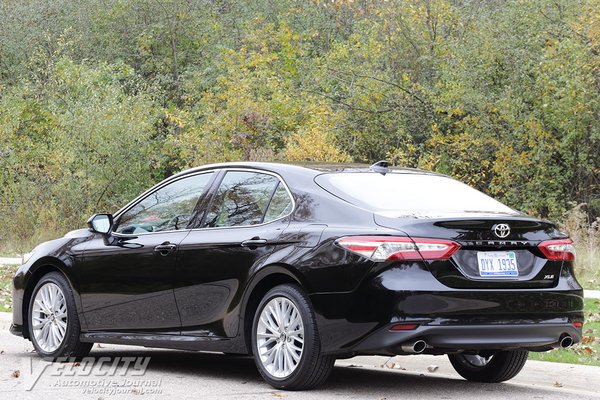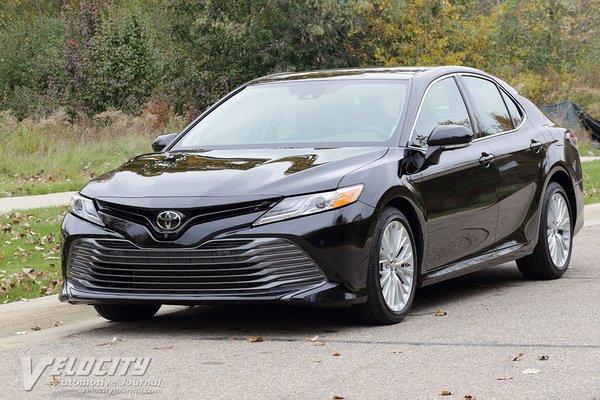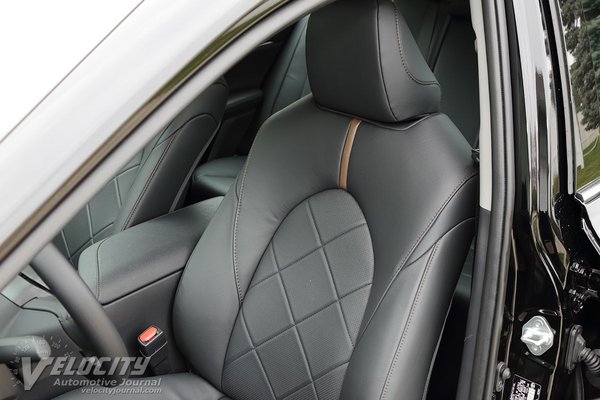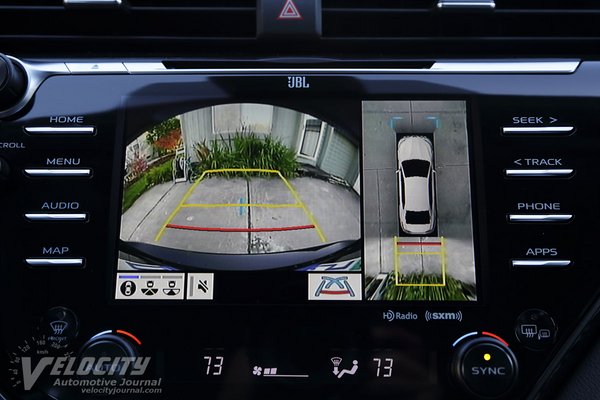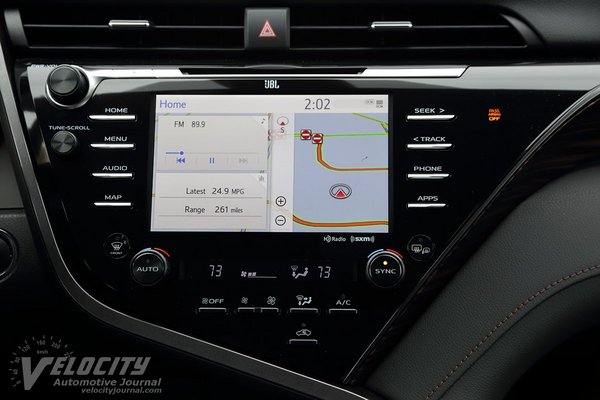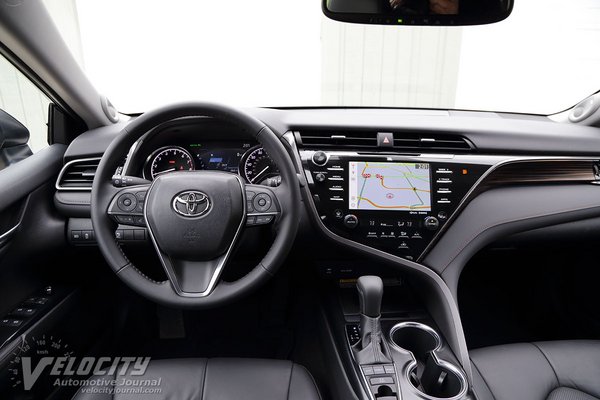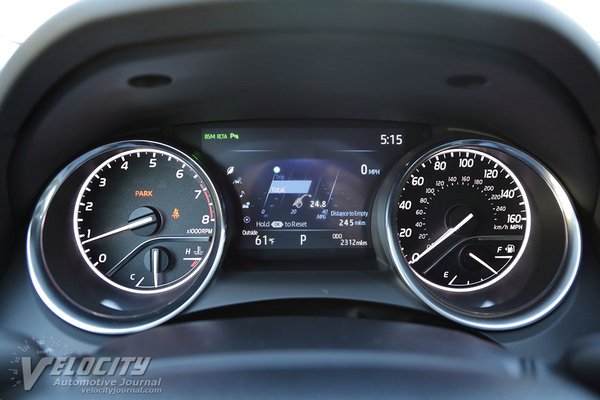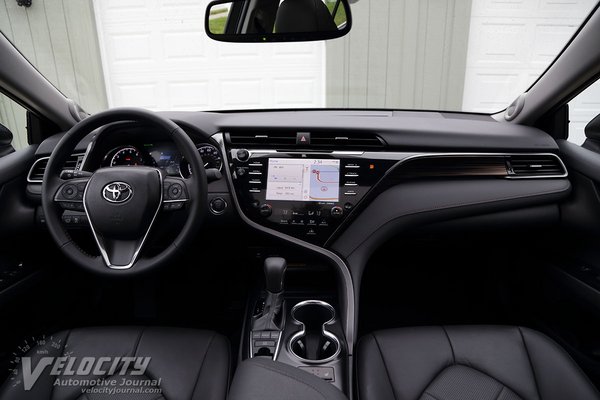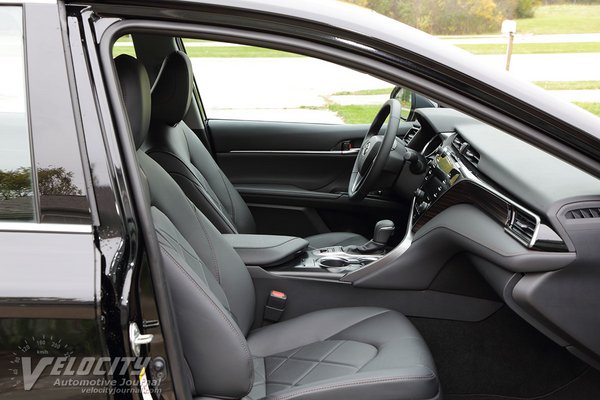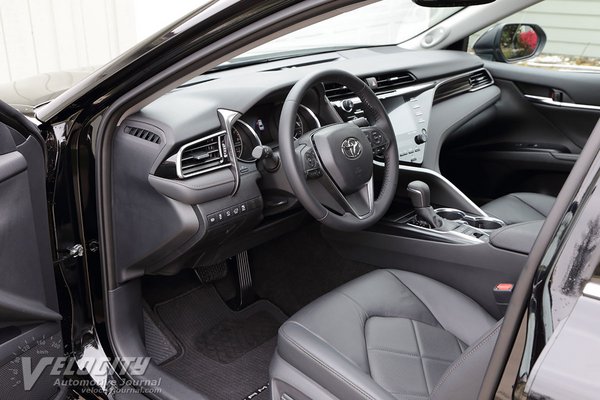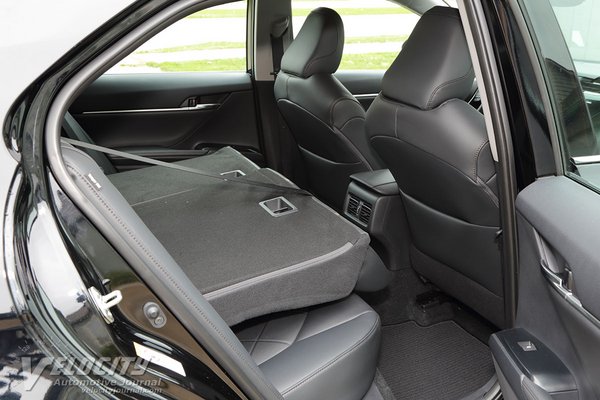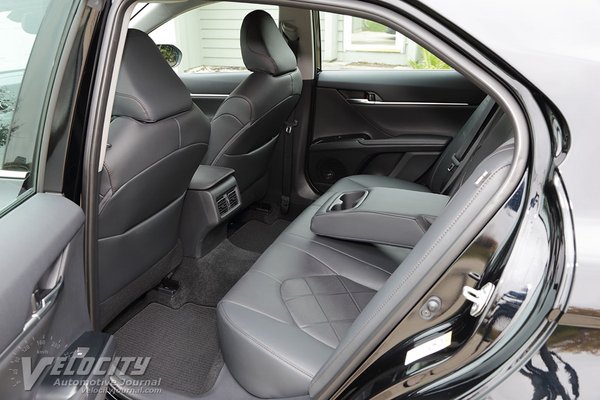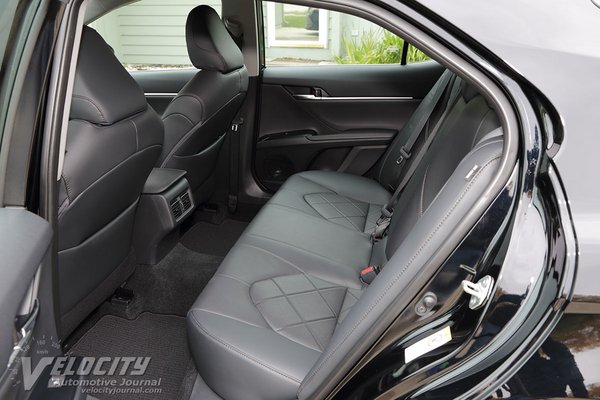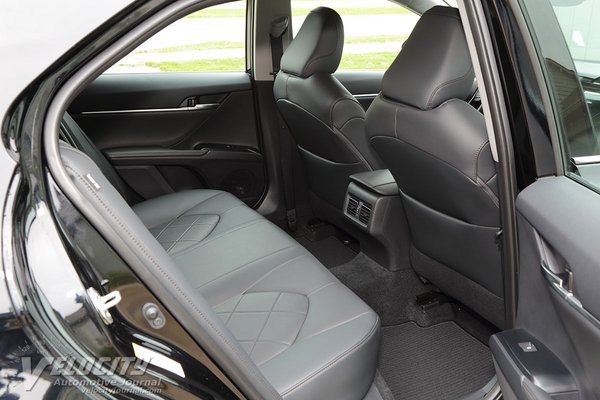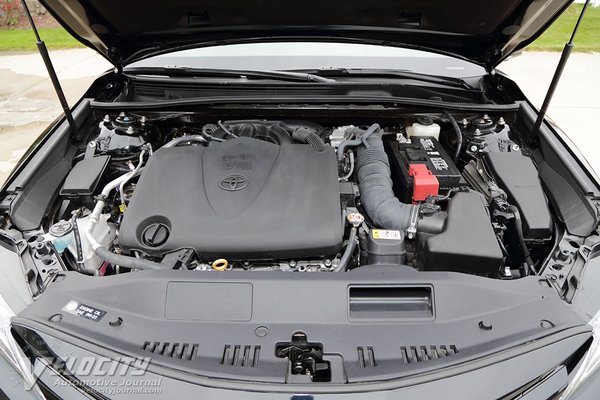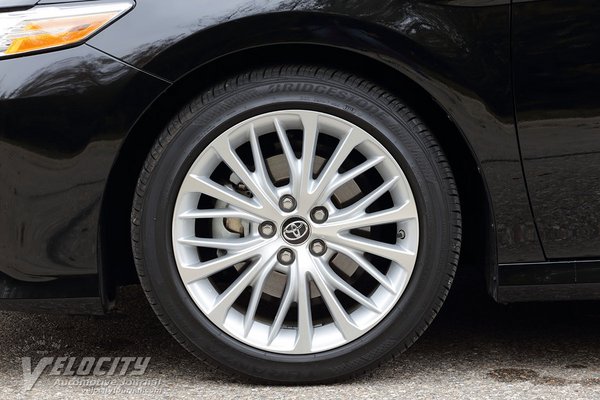2019 Toyota Camry XLE V-6 Review
11/08/2019
Shahed Hussain
The Camry has been the preferred midsize sedan for millions of customers over two decades. Yet as SUVs and pickups have grown to over half the market, Toyota needed to make the new Camry stand out from the recently redesigned Accord, Altima and Sonata.
A total of seven gasoline-powered models, plus three hybrids ensures that every customer has a Camry priced within their budget. The entry level 2019 Camry L starts at just over $24K and ranges up to top XSE V-6 ($34,850). We tested a 2019 midlevel Camry XLE V-6 with an MSRP of $34,300. Notable standard equipment on the XLE includes LED headlights, alloy wheels, leather power seats (heated in front), panoramic glass roof, 8-in. infotainment display, 9-speaker JBL audio system, dynamic radar cruise control, lane departure alert, blind spot monitor, and rear cross traffic braking.
Although a turbo inline-4 is often the premium engine in other midsize sedans, the Camry retains its normally-aspirated 3.5L V6. The all-aluminum six has dual overhead-cam heads, direct and port fuel-injection (D-4S), plus variable valve-timing (VVT-iW and VVT-I). Rated output is 301-hp @ 6,600 RPM and 267 lb.-ft. @ 4,700 RPM on 87-octane regular fuel. The V-6 is mated to an 8-speed automatic; both seventh and eighth are overdrive gears (0.800:1 and 0.673:1) driving a 2.561:1 axle ratio. Fuel consumption ratings are 22/33 MPG city/hwy. We averaged 24-25 MPG in mixed urban and highway driving.
Toyota kept the typical front suspension layout of MacPherson struts and stabilizer bar (25.0 mm dia.) in front. At the rear is a multi-link design with dampers and a stabilizer bar (25.4 mm dia.). Steering is via an electrically-assisted rack-and-pinion system with 2.6 turns lock-to-lock. Brakes are all-disc with 12.0 in. dia. front rotors and 11.06 in. dia. rear rotors; all Camrys share the same brake specifications. Camry XLE models are equipped with 18-inch diameter alloy wheels shod with P235/45R18 Bridgestone Turanza EL440 all-season tires. ABS, VSC (Vehicle Stability Control) and SST (Smart Stop Technology) are standard. Curb weight for the XLE V-6 is 3,549 lbs.
Toyota focused on the interior details for the new Camry, especially in the XLE model, which is full of luxury touches such as stitched door panels, perforated leather seats, wood and matte aluminum trim. Most interior surfaces are padded, reinforcing the impression of luxury. Soft leather seats pamper passengers with superb comfort and reasonable lateral support. Front seats heater controls are conveniently located on the center console. Due to the panoramic roof, headroom front and rear is adequate for occupants up to 5'-10" ft. tall. Rear legroom is generous, and so is overall seat comfort for the outboard passengers; the center position is acceptable for only short trips due to the stiff seatback.
A conventional instrument cluster consists of backlit analog speedometer and tachometer, complemented with fuel and coolant temperature gauges. A multi-function LCD display show fuel consumption, digital speed readout, exterior temperature and other vehicle data. A head-up display projects vehicle speed and transmission mode on the windshield directly ahead of the driver. Integrated within the leather-wrapped steering wheel are phone, cruise control, and audio system controls.
Opting for the XLE adds a larger 7-in. diagonal touchscreen, surrounded by slim buttons for frequently used functions, along with knobs for the JBL audio and HVAC system. Besides the standard rearview camera display, other cameras project a 360-degree overhead view to aid parking maneuvers. Dual cupholders on the center console are conveniently located next to the transmission shift lever. Complementing the USB and analog audio inputs on the center stack are additional 2 USB ports within the center console bin. Behind the console shift lever are pushbuttons for Eco, Normal, and Sport powertrain modes.
The 301-hp V-6 motivates the Camry with superb midrange and highway passing acceleration. Coupled with the 8-speed automatic that delivers seamless shifts, this powertrain delivers satisfying performance. Even during full throttle acceleration, the engine never becomes objectionably audible. At 80 MPH, the Camry tracks effortlessly on the highway with engine rev below 2,000 RPM. Switching from Normal to the Sport setting alters transmission shift point to higher RPM and quicker downshifts. An Eco mode is also available, but we only used the Normal and Sport modes. Alternately, gearshifts via the console-mounted lever are available when full manual shift control is desired.
Since Toyota offers the sporty XSE trim, the XLE can continue its mission to be the luxury Camry. Unsurprisingly, suspension tuning is biased toward ride comfort, with soft springs but firm damping to maintain body control. Moderate understeer and significant body roll confirm that the Camry XLE is aimed at customers looking for an effortless long-distance cruiser. However, the 18-inch diameter wheels and 45-series low profile tires fitted to the XLE cannot adequately isolate the cabin from potholes and patched road surfaces in southeast Michigan. The electrically-assisted rack-and-pinion steering is calibrated to provide minimal assist, and communicates road textures without excessive kickback. The all-disc brakes are surprisingly effective, hauling the Camry down from highway speeds with confidence, with firm pedal feel.
Although the automotive market has tilted toward SUVs, midsize sedans retain a significant slice of total sales. The Camry is without question one of the best affordable sedans in its class. Toyota offers a variant for everyone, with competitive pricing throughout the model range. The Camry XLE combines V-6 power and a compelling blend of equipment for a relatively reasonable price. Budget-conscious customers should consider the similarly equipped 2.5L Camry XLE priced at a more affordable $29K.

